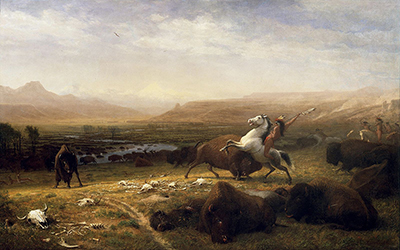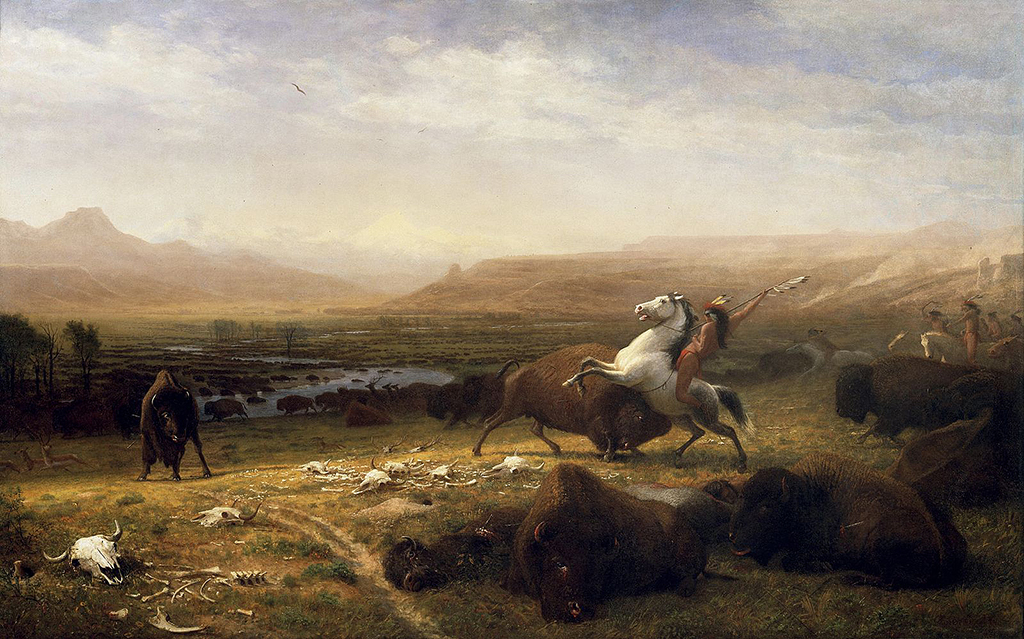As one of the most striking of Albert Bierstadt's paintings, Last of the Buffalo portrays a Native American man taking down his prey.
The dark mood of the painting transforms the act from survival to drama, and shows a poignant time in America's history. Painted toward the end of the 19th Century, Last of the Buffalo is an image that would have been very meaningful at the time. As the buffalo were hunted almost out of existence, those that lived on them for food and other means of survival found their cultures threatened or even destroyed. The decision to paint this scene shows a dedication on Bierstadt's side to show one part of the American West that he perhaps knew would not continue long past his time.
Bierstadt is known for his use of light; he could transform any scene into a beautiful, sparking picture with this skill. Though some consider it overuse of light, in this painting it brings to life the drama and tension of the moment. The hunter and his prey are illuminated with the warmth of the sun, set against a dark background that lets the eye focus only on the most important part of the image.
In many of Bierstadt's paintings the scenery is complex and detailed, but here all of the complexity is concentrated into the forms of the man and the beast, leaving the background beautiful but not the focus. As the hunter prepares to take his killing blow, it is almost possible to see the tension in his body and the surge of power in the buffalo's body in turn. Last of the Buffalo is a painting that seems to move and shimmer with its own light. As it displays a time long past and full of contention, this painting is sure to be a conversation starter no matter where it is displayed.





